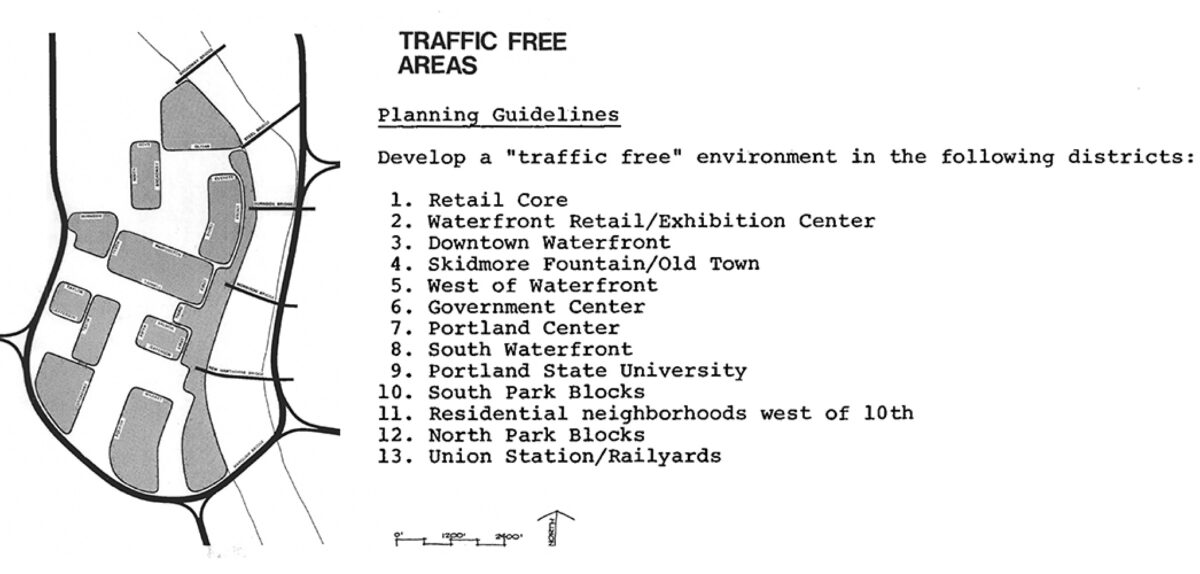
Thanks to a partnership between Portland State University and tactical urbanist group Better Block PDX, dreams really can come true for people who fantasize about making changes to Portland’s streetscape. This year, the program will tackle design ideas that include converting a cul de sac into an outdoor plaza space, working with urban design expert Cathy Tuttle to polish up and operationalize a plan for a carfree Downtown Portland, and more.
The Better Block program, which just announced its 2022 project line-up, allows people to submit proposals for temporary pop-up projects they want to see implemented on Portland’s streets. Students at PSU’s Transportation Research and Education Center (TREC) will then study the selected projects and help them come to fruition. It’s a sweet deal that allows Portlanders to become involved in what our city’s streets look like while also giving TREC students an opportunity for hands-on learning.
Some projects selected in this program in the past have gone on to become permanent. Better Naito Forever, which recently opened to much fanfare, started off as a Better Block project.
Advertisement
What can we expect to see making its way through the Better Block program this year? Keep an eye out for these five projects coming to life on our streets this year:
• Argay Terrace Transformation: This project seeks to transform the intersection of NE 131st and NE Prescott Dr from a dangerous corner into a welcoming neighborhood space, in a community which is 47 percent Black, Indigenous and people of color.
• Car Free Zones in Downtown Portland: In 1972, Portland City Planners and the City Council approved a carfree plan for downtown. Parts of it were implemented in the Waterfront Trail and Halprin Open Space Sequence, and this project seeks to update and operationalize the rest of the plan.
• Keaton Otis Memorial: This project seeks to create a safe space for community members to gather at a memorial, with a street design that reduces or eliminates car traffic at the gathering space.
• Sabin Outdoor Community Space: This project would convert a dead-end cul de sac near a future affordable housing development into a pleasant, functional outdoor space that can be easily navigated by foot, bike or wheelchair.
• Walkable Rosewood: This project would improve the pedestrian experience along several streets in the Rosewood neighborhood with temporary or permanent walkways, intersection treatments, and art installations.
These projects will begin as temporary changes to Portland’s streetscape, but if they’re a hit, who knows – they just might become long-term additions to Portland’s street design.
Which of these projects is most exciting to you? Let us know, and stay tuned for updates as they come to life.


